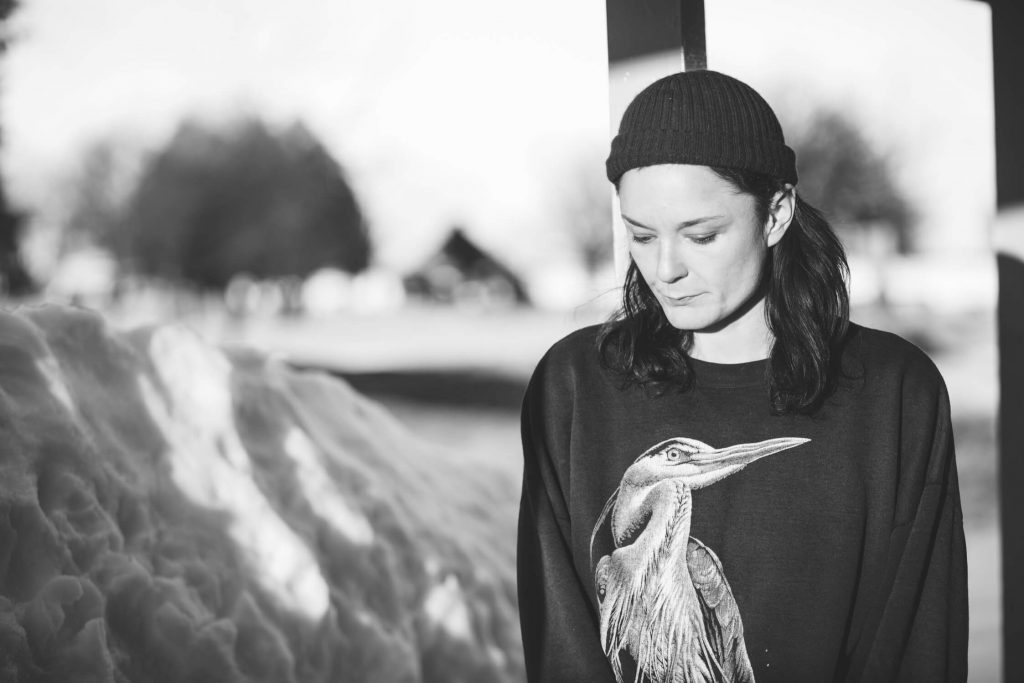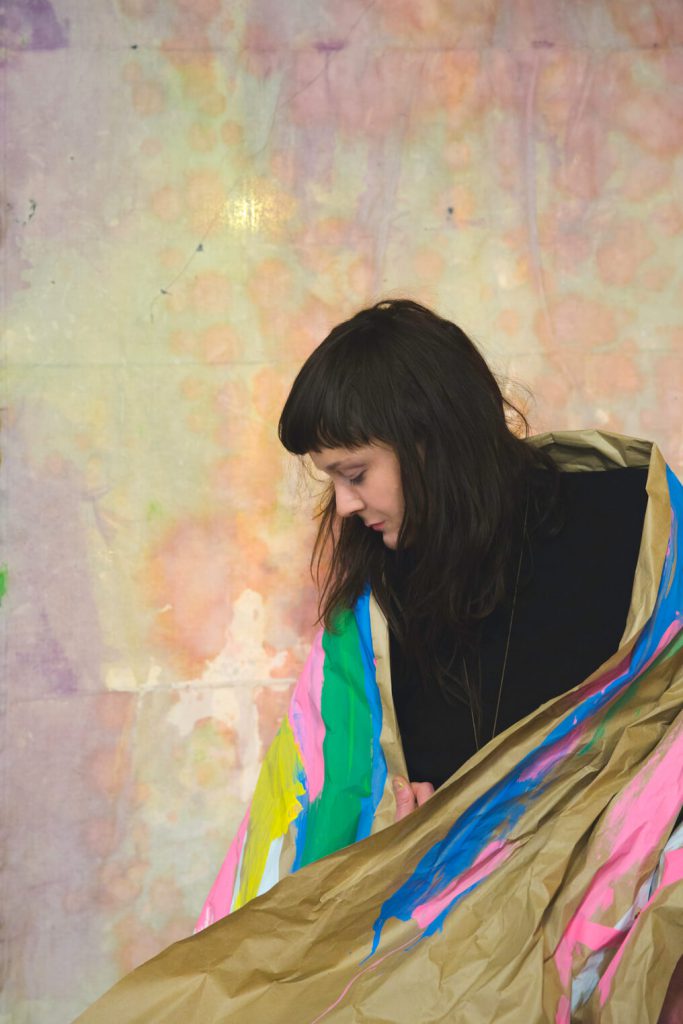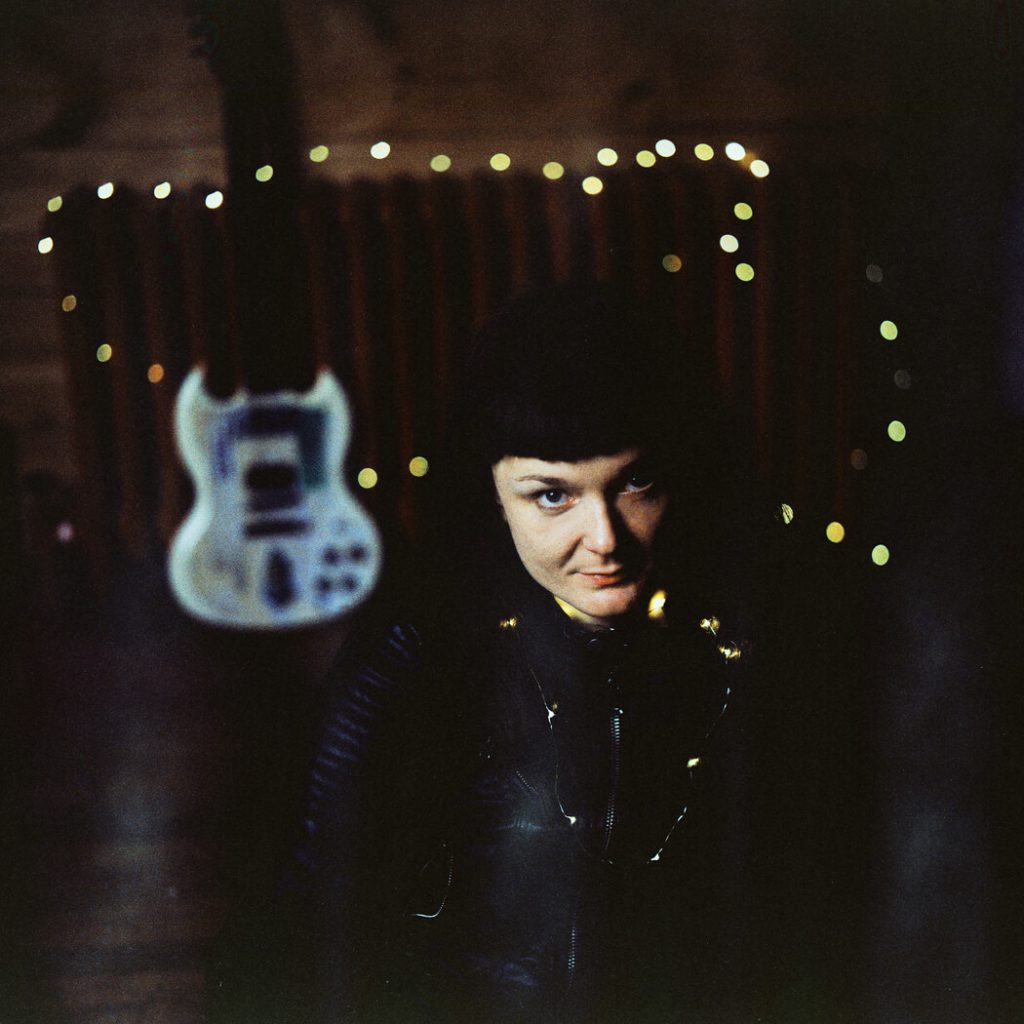Returning Home to Find Something New: Land of Talk’s Life After Youth
A few weeks ago, I sat at my kitchen table and called Elizabeth Powell on Skype. After a couple of rings, her face appeared on my screen. She waved and said hello from her home in Orillia, Ontario; I waved and said hello from my apartment in Brooklyn. And then, a glitch: I could hear everything Powell was saying, but to Powell I was mute. I started to mouth words in slow motion and brought my hand to my ear in the shape of a telephone: “I’ll call you on my cell!” I was hoping she’d understand. And then we started laughing. But while I heard her spirited chuckle, Powell could only watch my silent laughing face.
Powell had used Skype only once before, and it was to talk to her nephews. Regardless of this failure, she conceded, it was nice to have seen each other. It jumpstarted a familiarity so that we could more easily get down to the business of talking about her latest album, Life After Youth, from her widely-admired indie-rock band, Land of Talk. The Omaha-based label Saddle Creek released the album last Friday.
This was not, however, a business-as-usual release for a musician with an established following. (Initially based in Montreal, Land of Talk rose to prominence in 2006 with its debut Applause Cheer Boo Hiss. In less than 30 minutes, Powell unleashed her visceral, soft-yet-jagged voice over screeching guitars, and listeners took note.) Indeed, despite the fact that Life After Youth is now Land of Talk’s third full length album, it is the first her fans have heard from Powell in seven years. And this brings me back to the fact that, when we finally connected, Powell was more than typically excited to start discussing her songs.
“You want to hear more about the music, and that’s all I want to talk about,” she confirmed. Not only had a significant period of time passed since she released Cloak and Cipher in 2010, but the time in between had not been easy for Powell: Success and constant touring had wrung her dry, and in 2011 she left Montreal for her hometown. She also put Land of Talk on unofficial hiatus. And then, in the midst of it all, Powell’s father, whom she is close to, suffered a stroke. But as she helped and watched him recover, Powell’s father pushed Elizabeth (gently, I’m sure) to get her act together; to get back to doing what she did best. From this spiritual gully, Life After Youth was born.
Now, with the completion of the album, and a tour beginning in early June (with a stop in New York on June 14th) Powell has re-summoned her powers, and is ready again to share Land of Talk with her fans (to whom she refers familiarly as “Land of Talkies.”) “Only now am I realizing it is through talking and having conversations about your struggles, or what you love, that’s how we get through stuff,” said Powell. “I just wanna really be answering the questions with as much clarity, and with as much respect to the music as I can, because it means so much.” After all, she notes: she might be a music maker, but she called her band Land of Talk. And so, Powell settled in to discuss ten songs that are both classic Lizzie Powell—emotive indie rock with plenty of jagged edges—but also more polished than before. It’s the music of a person who has learned a little more about herself than the last time we heard from her.
*****


Powell grew up in a part of Canada that, in her verbal description of its geography, I thought sounded like the same stomping grounds as Margaret Atwood. A recent New Yorker profile on the author described it as an excessively isolated, lake-filled place with acres and acres of woods. In fact, I was wrong; but by dumb luck, I was also right: Atwood grew up, in part, north of Lake Superior, but today she is often in Orillia, a couple hours outside of Toronto, and Powell sees Atwood regularly in the same cafe. In addition to this literary presence, musical standouts have lived here, too: Glenn Gould, Neil Young (whom Powell’s father remembers getting kicked out of their high school), and folk musician Gordon Lightfoot (the town holds a statue of him, and his music “peppered” Powell’s days). Plus, “This has nothing to do with [geography], but the myth is that George Harrison is my fifth cousin,” Powell added. “That’s why I hold the guitar so high.” I remarked that all of this made her home sound like a magical place. “It really truly is a place of magic,” she agreed.

Powell’s youth was actually spent miles outside of Orillia, in a one room school house that her parents, whom she described as hippies, converted into a home. It came complete with no doors and a lofted mezzanine. “I crawled up it and would fall down all the time. My creativity comes from brain damage having lived in that house,” Powell said—joking of course. She and her brother Gray—a successful stage actor today—ran in the back fields near a cold water river, and disappeared into the woods for hours. They would dance and put on musicals with “weirdo wild-child cutouts.”
The soundtrack from Powell’s youth included Paul Simon’s Graceland, the Eurythmics, a new age Canadian pianist named Michael Jones, and his 1987 cassette, Amber (“We were obsessed with it,” says Powell). There was also a 7 inch from Bob Marley with a song he wrote for the Melody Makers, “Children in the Ghetto.” Powell began singing it: “In the ghetter / bitter was sweet… ” “That song,” Powell enthused, “we went crazy for it.”
When Powell started making music of her own, she fell in with some notable characters: Justin Vernon (also an ex of hers), the Arcade Fire, and Sharon Van Etten, who is a close friend of Powell’s, and a collaborator—especially lyrically—on Life After Youth. But in the mid-aughts, when Land Of Talk splashed onto the indie seen, Powell was not prepared for her own success.
“My way of understanding the world was through music, but I started to feel like it was more about me than my music, and I was alienated by that,” she explained. With increased notoriety, she took on a distorted perspective of who she was. The internet made her feel exposed and vulnerable. “When your music becomes public, you relinquish a lot, and I wasn’t willing to relinquish my privacy” Powell summarized. Instead, she left Montreal and went home. “Long story short,” she said, “I was saving my ass.”
*****


And then, in the midst of that break, her dad’s health took her full attention. And he, in turn, told her it was time to make music again. Powell mentioned a metaphor to describe the emotional place she was in at the time—but it was also literal object from her childhood home: an empty propane tank that she removed from their lot and brought with her to Orillia. “I started thinking of, when you’re empty, we resonate with emptiness: but we’re also the most resonant,” Powell explained. She began long distance running, and sought musical inspiration from her friends. She was introduced to a water drum, and a stringed Japanese instrument called the tonkori. It is narrow, long, and simple, and emits a dreamy reverberation; at the same time, it contains rawness and depth. It was easy to imagine it pairing naturally with Powell.

I asked if that instrument appeared on Life After Youth. No, she said. But like any piece of music that you return to again and again, or with an album that you love, its effects are more oblique than literal. Music creates a mood that you live inside of as you listen to it, and it stays with you when it’s over. The tonkori nudged her into a place of heightened reflection; and so, In Life After Youth, it is easy to imagine Powell in a place of unprecedented calm, unfurling self-knowing moments that are both emphatic, and completely contained.
On one hand, there is the urgent “This Time,” (I don’t wanna wast it this time / And see fate as the end of me / I don’t want to wast it, my life / And know it was in front of me) “It was a mantra and a self-help thing: Get your shit together! Don’t waste anything or more time,” said Powell. “Not that I’m going to, but I don’t want to!” And later, that is balanced with the supreme calm of “Inner Love,” a song that’s like one long self-embrace. It evokes an image of Powell singing it, completely still, in the middle of an empty stage, blooming into herself, into self love, regardless of any chaos around her. (I free my back / The weight it loves me / Owes nothing / Feeling here is free). That song, says Powell, has the tonkori all over it—in spirit at least.
Historically, Powell’s lyrics have been somewhat inscrutable. There are images, there are moods, sentence fragments that mean something to you one second, and then confuse the next. For example, “Your voice becomes my home”—that’s romantic and straightforward; but “Maybe when I die, I get to be a car,” in the same song, is confusing (from 2008’s “It’s Okay”). Powell says that, previously, she hadn’t thought very deeply about her lyrics, or even understood specifically what they have meant (Incidentally, “It’s Okay” was inspired by a vivid dream, from which Powell woke up poignantly missing someone.) But with Life After Youth, Sharon Van Etten pushed her to a new level of lyrical clarity.
“This is the first time I’ve ever entertained working with anybody lyrically in terms of what I’m saying,” said Powell. “I never thought I would be conducive to collaboration.” Furthermore, there had always been an aspect of secrecy that she had guarded creatively. “I had a lot to prove,” said Powell, “I was in a man’s world, especially as a woman in music trying to be taken seriously.” But with Van Etten, there was a level of trust, and a friendship, that allowed Powell to let her into that process. “She just kind of shined a light on a cavernous place,” said Powell—like into that propane tank that contained so much hidden potential. I told Powell I, too, thought it would be hard to invite someone into a writing process, or the music you’re making. But all writing needs editing, even when the thoughts and feelings are our own. “If my aim is to connect, and not to obfuscate and cloak, and to reveal more, [Sharon] helped me reveal more of myself,” says Powell. “She is an amazing listener. That is so rare. And that is also what makes her such a great writer and friend. I’m sure these lyrics are not cut and dry realities, but relatively for me, this is the clearest I’ve even been.”
*****


I mention that, perhaps more than most album releases, Powell’s professional journey with Life After Youth mirrored that of her life. She made the album with her original drummer, Bucky Wheaton, with whom she had not been in touch with for years. At the same time, she had returned to the place where her life began. But Orillia was not what she expected: today there is a lively and burgeoning arts community (surely, this is what Atwood likes about it, too), pop-up shops, and music venues. “It’s got this new life about it. In a weird way, there is a rebirth happening here,” she says. “It was such a cool surprise for me. And I wanna stay here and grow with it.”

At the same time, she and her old musical partner formed a brand new relationship. “Bucky and I made this album that we thought we always wanted to make, and instead we made a record that taught us everything we thought we knew—what Land of Talk was, and so much about each other, and it was so revealing. You thought you were going back, but in fact you were going back to something brand new,” Powell reflected. “I don’t even know what that’s called,” she said, flummoxed. “There must be a word for it in life.”
There were three, I realized, that would do the trick: life after youth. Subconsciously, Powell had already figured it out.
Photos by Matt Williams
You might also like 




















